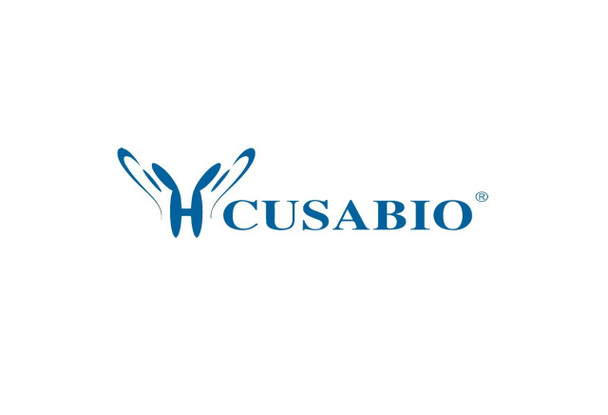Cusabio Influenza A virus Recombinants
Recombinant Influenza A virus Matrix protein 1 (M) | CSB-EP389592ILS
- SKU:
- CSB-EP389592ILS
- Availability:
- 3 - 7 Working Days
Description
Recombinant Influenza A virus Matrix protein 1 (M) | CSB-EP389592ILS | Cusabio
Alternative Name(s): M; Matrix protein 1; M1
Gene Names: M
Research Areas: Others
Organism: Influenza A virus (strain A/USA:Iowa/1943 H1N1)
AA Sequence: MSLLTEVETYVLSIVPSGPLKAEIAQRLEDVFAGKNTDLEALMEWLKTRPILSPLTKGILGFVFTLTVPSERGLQRRRFVQNALNGNGDPNNMDRAVKLYRKLKREITFHGAKEIALSYSAGALASCMGLIYNRMGAVTTEVAFGLVCATCEQIADSQHRSHRQMVTTTNPLIRHENRMVLASTTAKAMEQMAGSSEQAAEAMEVASQARQMVQAMRAIGTHPSSSAGLKNDLLENLQAYQKRMGVQMQRFK
Source: E.coli
Tag Info: N-terminal 10xHis-tagged and C-terminal Myc-tagged
Expression Region: 1-252aa
Sequence Info: Full Length
MW: 32.8 kDa
Purity: Greater than 85% as determined by SDS-PAGE.
Relevance: Plays critical roles in virus replication, from virus entry and uncoating to assembly and budding of the virus particle. M1 binding to ribonucleocapsids (RNPs) in nucleus seems to inhibit viral transcription. Interaction of viral NEP with M1-RNP is thought to promote nuclear export of the complex, which is targeted to the virion assembly site at the apical plasma membrane in polarized epithelial cells. Interactions with NA and HA may bring M1, a non-raft-associated protein, into lipid rafts. Forms a continuous shell on the inner side of the lipid bilayer in virion, where it binds the RNP. During virus entry into cell, the M2 ion channel acidifies the internal virion core, inducing M1 dissociation from the RNP. M1-free RNPs are transported to the nucleus, where viral transcription and replication can take place Determines the virion's shape: spherical or filamentous. Clinical isolates of influenza are characterized by the presence of significant proportion of filamentous virions, whereas after multiple passage on eggs or cell culture, virions have only spherical morphology. Filamentous virions are thought to be important to infect neighboring cells, and spherical virions more suited to spread through aerosol between hosts organisms
Reference: "The NIAID influenza genome sequencing project." Ghedin E., Spiro D., Miller N., Zaborsky J., Feldblyum T., Subbu V., Shumway M., Sparenborg J., Groveman L., Halpin R., Sitz J., Koo H., Salzberg S.L., Webster R.G., Hoffmann E., Krauss S., Naeve C., Bao Y. Tatusova T. Submitted (MAR-2007)
Storage: The shelf life is related to many factors, storage state, buffer ingredients, storage temperature and the stability of the protein itself. Generally, the shelf life of liquid form is 6 months at -20?/-80?. The shelf life of lyophilized form is 12 months at -20?/-80?.
Notes: Repeated freezing and thawing is not recommended. Store working aliquots at 4? for up to one week.
Function: Plays critical roles in virus replication, from virus entry and uncoating to assembly and budding of the virus particle. M1 binding to ribonucleocapsids (RNPs) in nucleus seems to inhibit viral transcription. Interaction of viral NEP with M1-RNP is thought to promote nuclear export of the complex, which is targeted to the virion assembly site at the apical plasma membrane in polarized epithelial cells. Interactions with NA and HA may bring M1, a non-raft-associated protein, into lipid rafts. Forms a continuous shell on the inner side of the lipid bilayer in virion, where it binds the RNP. During virus entry into cell, the M2 ion channel acidifies the internal virion core, inducing M1 dissociation from the RNP. M1-free RNPs are transported to the nucleus, where viral transcription and replication can take place.
Involvement in disease:
Subcellular Location: Virion membrane, Peripheral membrane protein, Cytoplasmic side, Host nucleus
Protein Families: Influenza viruses Matrix protein M1 family
Tissue Specificity:
Paythway:
Form: Liquid or Lyophilized powder
Buffer: If the delivery form is liquid, the default storage buffer is Tris/PBS-based buffer, 5%-50% glycerol. If the delivery form is lyophilized powder, the buffer before lyophilization is Tris/PBS-based buffer, 6% Trehalose, pH 8.0.
Reconstitution: We recommend that this vial be briefly centrifuged prior to opening to bring the contents to the bottom. Please reconstitute protein in deionized sterile water to a concentration of 0.1-1.0 mg/mL.We recommend to add 5-50% of glycerol (final concentration) and aliquot for long-term storage at -20?/-80?. Our default final concentration of glycerol is 50%. Customers could use it as reference.
Uniprot ID: A4GCL0
HGNC Database Link: N/A
UniGene Database Link: N/A
KEGG Database Link: N/A
STRING Database Link: N/A
OMIM Database Link: N/A









